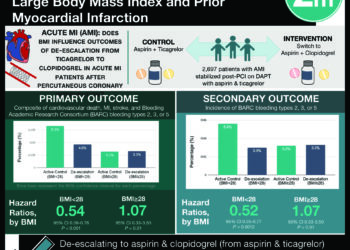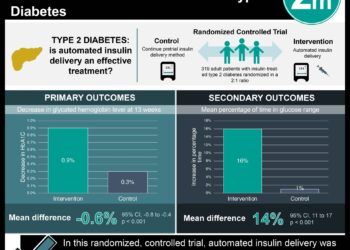Off-label use of prescription drugs associated with adverse drug events
1. In this retrospective cohort study, off-label use of prescription drugs was associated with an increase in the risk of adverse drug events (ADEs).
2. The most important risk factor that was associated with off-label drug use adverse drug events was number of drugs the patient takes. Increasing number of drugs was associated with more ADEs.
Evidence Rating Level: 2 (Good)
Study Rundown: Many common medications are used for off-label indications. As one may expect, this could lead to adverse drug events. Although there is increasing concern about the risk of off-label prescription drug use, there is limited evidence on the topic. This study aimed to monitor and evaluate off-label use of prescription drugs and its effect on adverse drug events (ADEs) in an adult population.
The use of prescription drugs for off-label indications was associated with an increase in ADEs. Interestingly, the rate of off-label use of drugs was significantly higher than the on-label use of drugs. Using off-label drugs for indications that lacked strong scientific evidence had a 54% higher rate of ADEs. Particular risk factors of ADEs in off-label drug use included: use by women, patients using 5-7 drugs, and patients using cardiovascular, central nervous system (CNS) or anti-infective drugs. The strengths of this study include the use of a validated longitudinal community based clinical information system. Limitations of the study include the identification of ADEs. In this study, AEDs were identified by physicians and input into the clinical decision support system. This may result in an underestimation of AEDs.
Click to read the study, published today in JAMA Internal Medicine
Relevant Reading: Monitoring the safety of medicines used off-label
In-Depth [retrospective cohort]: This retrospective cohort study took place in Quebec, Canada from January 2005 to December 2010. An electronic health record from primary care clinics that included treatment indications and outcomes was used as the database. Prescriptions dispensed to patients of these clinics were monitored for their treatment indication, the strength of evidence backing that indication, and evidence of ADEs. Adverse drug events were defined as discontinuation of drug due to ADE or allergic reaction. Further descriptions of what the ADEs may have been were not detailed. The Health Canada drug approval database was used to determine if drugs were off-label or on-label. Cox proportional hazards and regression for clustered data was used for statistical analysis. Hazard ratios were adjusted for patient comorbidities and other patient baseline characteristics.
A total of 3484 ADEs were found in 46,021 study patients. The rate of ADEs for off-label drug use was higher than that of on-label use (adjusted HR [aHR] 1.44, 95% CI 1.30-1.60). Off-label drugs that had poorer scientific evidence were associated with a greater rate of ADEs compared to on-label (aHR 1.54, 95% CI 1.37-1.72). The risk for ADEs were significantly associated with the following risk factors: drugs used by women (aHR 1.17, 95% CI 1.06-1.28), patients receiving 5 to 7 drugs (aHR 3.23, 95% CI 2.66-3.92) and patients using cardiovascular drugs (aHR 3.30, 95% CI 2.67-4.08) and anti-infectives (aHR 6.33, 95% CI 4.58-8.76). There was a non-significant trend towards the elderly incurring more ADEs with off-label drug use.
Image: CC/Wiki
©2015 2 Minute Medicine, Inc. All rights reserved. No works may be reproduced without expressed written consent from 2 Minute Medicine, Inc. Inquire about licensing here. No article should be construed as medical advice and is not intended as such by the authors or by 2 Minute Medicine, Inc.






![Adverse pregnancy outcomes associated with thrombophilias [Classics Series]](https://www.2minutemedicine.com/wp-content/uploads/2015/07/Classics-2-Minute-Medicine-e1436017941513-75x75.png)
